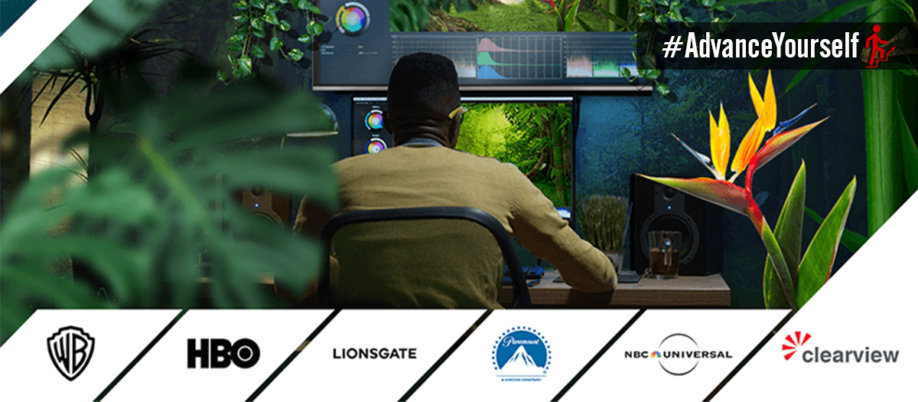Author’s Note: The following is an article I originally wrote for the site Sohonet.com titled “Best Practices For Effective Team Communication When Collaborating Remotely – with Editor Zack Arnold” republished in its entirety below.
» Click here to access the original article at Sohonet.com
We’ve come a long way since the pandemic first began from “Can a post-production workflow even function if everyone is stuck at home?” to, “What is the point of ever commuting to the office EVER again?” (As a social distancing veteran of 15+ years, dare I throw in a polite “I told ya so?”) Remote real-time collaboration isn’t going away anytime soon, no matter the external circumstances that initially created the inflection point that led us here. But we still have a lot of workflow steps to optimize if the ultimate goal is creating an experience that equals (or even surpasses) the magic that happens when everyone is collaborating in the same room. Luckily upgrading your remote communication workflow only requires a few simple added tools to keep the ideas flowing seamlessly and to ensure the notes get done right on time, every time.
Collaboration Is About More than Just Your A/V Signal
By and large the conversation about remote collaboration initially began with remote media management. To be clear: Media management and cloud storage is not what this article is about. Working under the assumption you have centralized your media in some fashion (or you’ve accepted the ‘Sneaker Net’ workflow), the next most urgent pain point for many has been finding the right technology that would ultimately create an experience such that your clients felt like they were in the room with you watching the live signal from your system. There are some great technologies providing this service, such as ClearView Flex, (read my extensive review here), Evercast and Streambox, and we’ve come a lot closer to getting the live signal from our NLE directly in front of our clients, whether they were using a laptop, an iPad, iPhone, or with ClearView Flex, via Apple TV.
But getting a (near) real-time high quality signal out of your NLE is only one of many battles that must be fought and won before we can declare ourselves winners in the ultimate war over whether or not it’s truly possible to collaborate remotely, and more importantly collaborate effectively. Below I have outlined four key areas where you should focus your attention next if your ultimate goal is optimizing communication while collaborating remotely.
1. Face-to-Face Communication
No doubt everyone on the planet at this point is intimately familiar with videoconferencing as it has become our new normal. I don’t think it’s an exaggeration to say we’re all tired of being on Zoom calls (“Zoom Fatigue” is very real), but when it comes to real-time collaboration, you can’t beat the value of face-to-face interaction. While it might be tempting to simply jump on speaker phone to walk your clients through an edit session, a lot of potentially vital information is lost. Facial expressions, mannerisms, and most importantly your clients’ unconscious reactions are absolutely vital to the collaborative process. Their words and their notes might say one thing, but their reactions might provide much deeper insights.
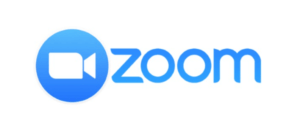
Don’t set up another remote collaboration session without first having a tool in place that allows face-to-face interactions. I believe we all have our preferred video conferencing platforms, but in case you’re still shopping around the obvious players are Zoom, Skype, FaceTime, Google Meet, Blue Jeans, Amazon Chime, or WebEx. The key to making this work is deferring to your clients’ tool of choice. Even if you love Zoom, think about this process from their perspective. If they use Amazon Chime all day long, conform to their needs and make the process of working with you as frictionless as possible. They’ll thank you for thinking of them and remember you when the next gig comes around. Once you’ve agreed upon a videoconferencing tool, it’s as simple as having your client’s face front-and-center on your main screen (without conflicting with your timeline, workspace, etc) such that you can easily monitor their reactions and have eye contact as you discuss notes and changes.
2. Collaboration Recording & Transcribing
For decades the collaborative and note-taking process has been a simple one: Discuss ideas, write ideas down, execute on those ideas. But nowadays with endless digital distractions and the speed at which we have to hop in and out of virtual sessions, it’s easy to forget what needs to get done and how. Furthermore a simple Zoom dropout for 5 seconds could mean the difference between understanding a note versus executing the exact opposite of your clients’ needs. That’s where recording & transcribing comes in very handy. Now that you are conducting your calls virtually, it’s very simple to record those sessions to refer to later.
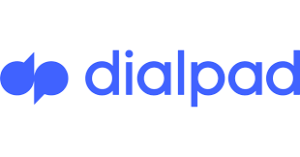
Thus you can have a more organic conversation without the added anxiety of wondering whether or not your chicken scratch notes even remotely reflect your conversations. Instead you can talk like human beings, have a free-flowing conversation, and refer back to those conversation recordings later for further clarification when needed. These recordings also become priceless when you want to re-review the reactions of your clients during a playback, for example whether or not they laughed at a particular part. Your memory might tell you one thing, but the recording won’t lie. While this might seem like a lot of extra work for you and your assistant, that’s where transcription services come in. It’s now possible to have the recordings AND the notes all in one place. If you are using the phone for your virtual communication (which I don’t recommend for the reasons stated in the previous section), DialPad is a great option that will transcribe your conversations in real-time.
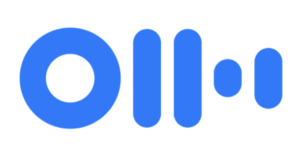
If you want to go to the next level (for virtually no extra cost), my go-to transcription service is Otter.ai. I use Otter.ai because it automatically transcribes all of my Zoom calls (not real-time, but you’ll have that transcription shortly after your call, depending on the length of your session). So if you’re looking for an excuse to switch from a different platform to Zoom, this is a great reason. Furthermore, Otter.ai allows you to share audio recordings & transcriptions with your clients in shared folders, they can then share with other assistants or team members, and now everyone is working from the same information.
3. Internal Team Communication
When remote workflows first became a reality, we all knew there would be a learning curve and things would move slowly. We accepted that. But unfortunately that bill has come due. With productions returning and the demand for new content higher than ever, delivery schedules thus far are not reflecting an allowance for the remote workflow learning curve. Therefore, you better be fast on your feet whenever your clients need something. Enter Slack.
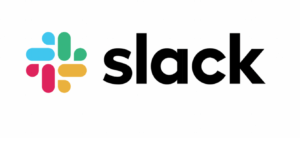
I manage my entire life via Slack. I have over 100 students in my Optimizer coaching & mentorship community in Slack, my internal team is in Slack, and I set up a new Slack workspace for every show I’m cutting (including my current show Cobra Kai). If you’re in the middle of a remote client session and they ask for a different shot, or they have questions about paperwork, or a missing insert, or whatever, you cannot interrupt that session to quickly call your assistant or producer via Zoom or phone. You need your team available at the tip of your fingers in such a way you don’t interrupt the creative flow of your session. Building Slack workspaces allows you to completely avoid your email inbox (a creativity black hole) and instead manage only the most important communication that will help you deliver your clients’ expectations with minimal friction and interruptions. Pro Tip: Organize your Slack team with multiple channels such that when during a session you can mute all unnecessary channels and only get notifications that are pertinent to the client session at hand. If Slack isn’t your thing the next alternative is most likely Microsoft Teams, but honestly I never hear good things about the Microsoft Teams experience. But I wholeheartedly recommend Slack. P.S. Slack is free. 🙂
4. Digital Project Management
I know for many people one of the most painful parts of the transition from working at the office to working from home was the paperwork. “What do I do about my binders? My production paperwork? How do I organize 50 different PDFs a day?” I made the decision in 2015 to transform my entire post-production workflow to become paperless. Nope, I haven’t cut from a binder, a physical script, or taken one real note with pen & paper since 2015. I’ve done it all virtually. At the time it seemed like I was a bit of an eccentric, and the response of my colleagues was, “That’s nice. But I’m good with my binders and legal pad, thanks.” But now that we would prefer to not print hundreds of pages of scripts and paperwork per day, virtual workflows have become our new reality whether we like it or not.

My tool of choice for virtual project management is Trello. Frankly if Trello goes offline I walk in circles wondering where I left my pants. It’s that vital to me getting the right things done every day. What I love about Trello so much is that it’s incredibly simple to begin using right out of the box (it’s basically the digital version of index cards taped to a wall), but once you get beyond the basics it has incredibly advanced organizational features, tools, and automations that can literally save you hours per day when used correctly. I’ve outlined my entire end-to-end virtual post-production workflow using Trello in my LinkedIn Learning course Trello For Video Post-Production. If you want to dive deeper into the nuances of the tool specifically beyond just post-production you can also try my LinkedIn Learning course Trello Essential Training. If Trello isn’t your thing, my ‘honorable recommendations’ would be Airtable or Asana. But take it from me: Trello is the simplest yet most powerful tool for the job.
Bringing It All Together
There’s a lot of really cool tools discussed above, so let me walk you through what your next client session could look like once putting all these pieces into place.
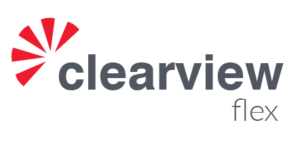
Let’s imagine you’re doing a real-time session using ClearView Flex… Using ClearView Flex you send your real-time signal to your client so they can “sit with you” on their laptop, iPad, or even via their Apple TV. (As an added bonus, you know your clients feel safe with the knowledge this tech has been approved by all the major studios…and it doesn’t hurt that you can now stream in 4:2:0 10-bit colour with surround sound too!) During that session you simultaneously chat “face-to-face” using Zoom so you can monitor reactions and facial expressions. You don’t worry about whether or not you caught everything because you’re recording that session (with your client’s permission, of course).
Image – Screenshot-2020-10-20-at-11.51.49-300×244
Throughout the session your client throws out random notes and ideas, all of which you captured because you have an automation setup using Otter.ai to record & transcribe everything during your Zoom sessions. At one point your client wonders “What happened to that insert we shot?” so you inconspicuously reach out to your assistant via Slack, and before your client even knows you’ve reached out you respond with, “You mean this one?” BAM. Shortly after your session is complete a card miraculously pops up in Trello (on the board of your choice) via automation that includes the link to your recorded session as well as the transcript. From this point your assistant reviews the transcription and provides the relevant notes in checklist form so you can get to work. That’s a world I want to live and work in going forwards. How about you? Having spent decades collaborating the way we have in person, it was easy for us to fall into the trap of “This is just how we’ve always done it.” But now that we’ve been forced to rethink creative collaboration from the ground up, I would argue that in our new virtual world not only can we collaborate as effectively as we used to in-person…I even think we have the potential to do it better.

